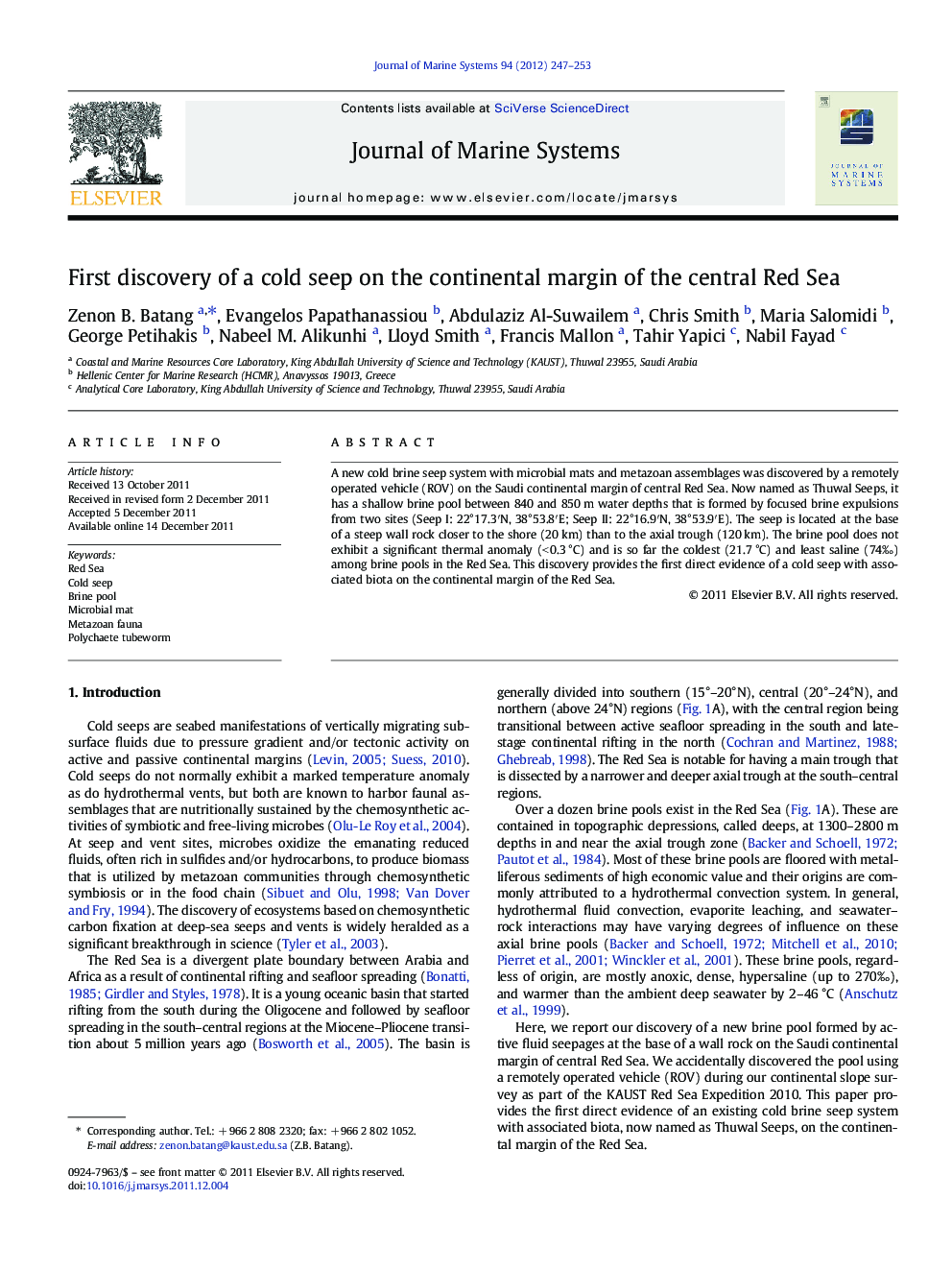| Article ID | Journal | Published Year | Pages | File Type |
|---|---|---|---|---|
| 4548261 | Journal of Marine Systems | 2012 | 7 Pages |
A new cold brine seep system with microbial mats and metazoan assemblages was discovered by a remotely operated vehicle (ROV) on the Saudi continental margin of central Red Sea. Now named as Thuwal Seeps, it has a shallow brine pool between 840 and 850 m water depths that is formed by focused brine expulsions from two sites (Seep I: 22°17.3′N, 38°53.8′E; Seep II: 22°16.9′N, 38°53.9′E). The seep is located at the base of a steep wall rock closer to the shore (20 km) than to the axial trough (120 km). The brine pool does not exhibit a significant thermal anomaly (< 0.3 °C) and is so far the coldest (21.7 °C) and least saline (74‰) among brine pools in the Red Sea. This discovery provides the first direct evidence of a cold seep with associated biota on the continental margin of the Red Sea.
► A new brine pool was accidentally discovered by remotely operated vehicle (ROV) on the Red Sea continental margin. ► This new brine pool does not exhibit a marked thermal anomaly. ► The pool is formed by focused brine seepages at two sites. ► Dense microbial mats and metazoan assemblages are found around the pool. ► These features validate the existence of the first cold brine seep with associated biota in the Red Sea.
